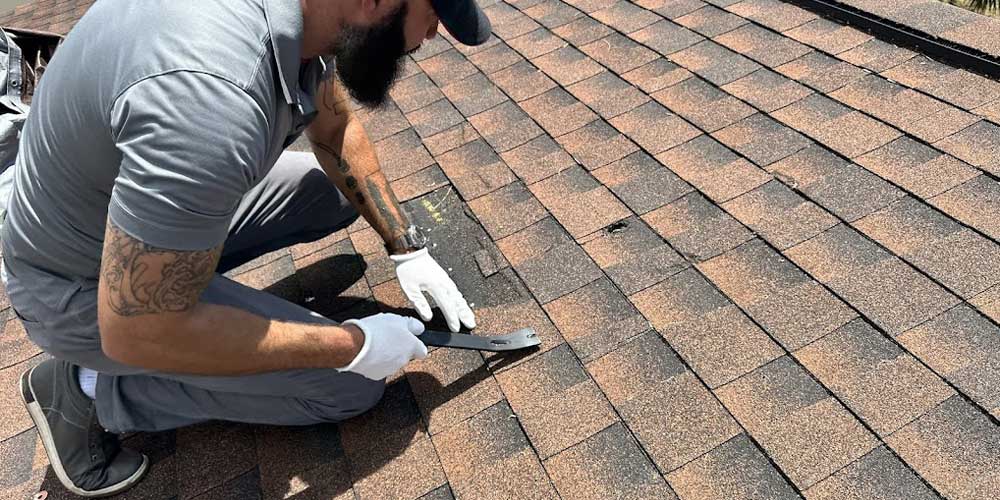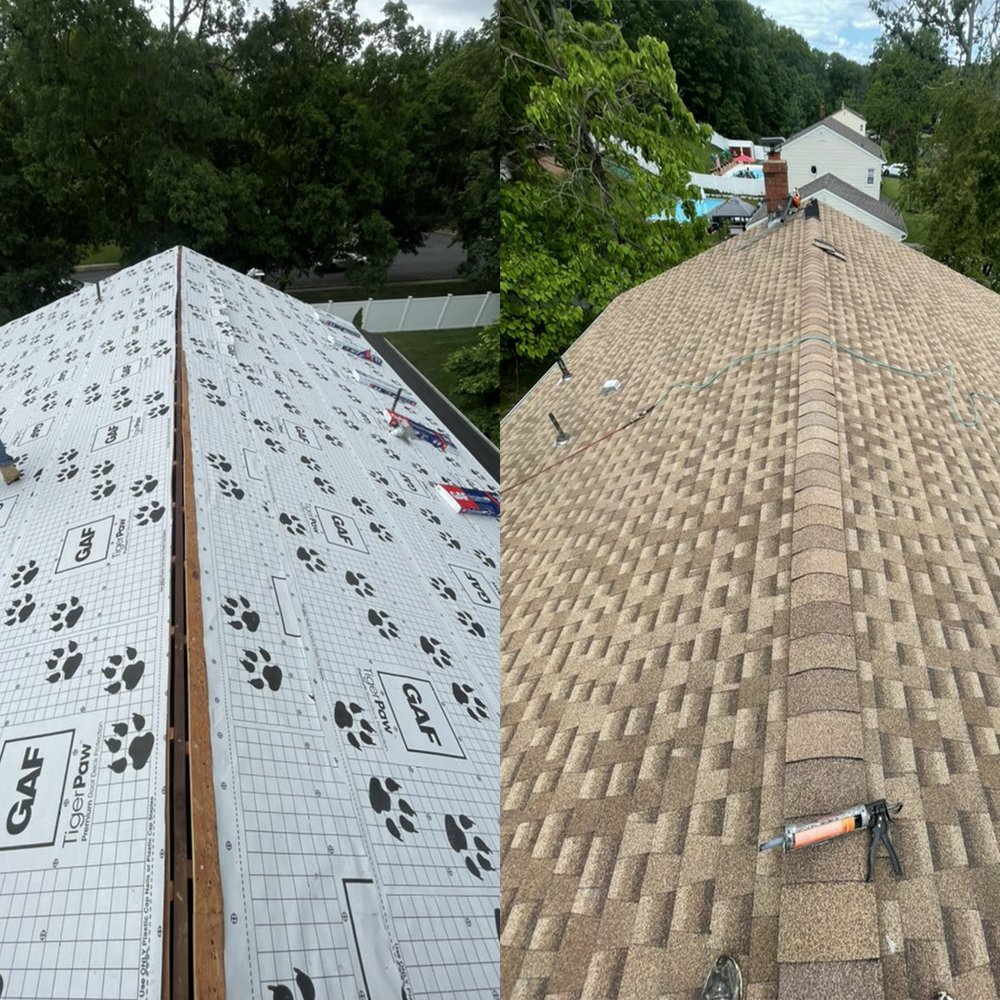Roof Repair Oahu: Expert Roof Fixes for Lasting Security
Roof Repair Oahu: Expert Roof Fixes for Lasting Security
Blog Article
Exploring the Numerous Kinds of Roofs: Which One Is Ideal for Your Home?
When considering the myriad sorts of roof coverings available, it is critical to assess how each option straightens with your home's special requirements, consisting of environment conditions, aesthetic preferences, and structural functionality. From the classic saddleback roof that efficiently networks rain to the contemporary flat roofing offering city versatility, each style provides unique advantages and challenges. Additionally, the selection may dramatically impact lasting maintenance and power performance. As you ponder the very best fit for your house, it is vital to weigh these elements thoroughly, specifically as some alternatives might amaze you with their prospective advantages.
Saddleback Roof
Saddleback roofs, defined by their triangular shape and sloping sides, are a prominent selection among homeowners looking for both aesthetic allure and functionality. This roofing system design properly permits for reliable water drainage, minimizing the risk of water merging and subsequent damages. Additionally, the high slopes produce adequate attic space, which can be used for storage space and even transformed into living areas.
One of the main advantages of saddleback roofs is their capability to hold up against rough climate condition. The design assists in lessening wind resistance, making them particularly suitable for locations susceptible to tornados. Moreover, gable roof coverings can be created using a range of materials, including shingles, tiles, and metal, providing home owners with flexibility in layout and budget.
From a building perspective, gable roof coverings can boost the aesthetic appeal of a home, supplying a classic and timeless look. On the whole, gable roofs stay a favored option due to their equilibrium of functionality and style, appealing to a vast variety of homeowners.
Flat Roofs
While often overlooked in favor of more typical roofing designs, level roof coverings offer special advantages that deal with certain building demands and modern-day layout preferences. These roofings are characterized by their very little pitch, enabling efficient use area, especially in urban environments where making best use of square video footage is vital.
One considerable advantage of level roofing systems is their flexibility. They can be made use of as additional home, such as roof gardens, patio areas, or solar panel setups, boosting the capability of a home. Moreover, flat roofs are usually much easier and much safer to browse during upkeep, helping with repair services and inspections without the challenges positioned by steep slopes.
Flat roofs can additionally be much more cost-effective in terms of materials and setup. With an easier layout, they frequently call for fewer sources, converting into reduced labor costs. Nonetheless, it's important to think about drain and waterproofing, as level roofing systems can be vulnerable to merging water if not adequately developed.

Hip Roof Coverings
Hip roofing systems stand apart for their elegant design and architectural honesty, making them a preferred option among homeowners. Identified by inclines on all four sides, hip roofs supply a well-balanced visual that complements numerous building designs - roof repair oahu. The symmetrical nature of these roofs helps to distribute weight evenly, boosting stability and durability
Among the vital benefits of hip roof coverings is their capability to endure harsh climate problems. The sloped surfaces assist in reliable water drain and snow drainage, reducing the threat of leaks and architectural damages. In addition, the design decreases wind resistance, making hip roof coverings less at risk to wind uplift compared to other roofing system kinds.


Lost Roofing Systems
Dropped roofing systems, as opposed to the complexity of hip roofs, provide a minimal and structured design more info here that appeals to modern-day aesthetics. Defined by a solitary sloping surface, lost roofings are typically made use of in contemporary architecture, yard sheds, and other functional structures. This simpleness not only boosts visual appeal but likewise enables for effective water drainage, making them suitable for different environments.
One of the key advantages of shed roof coverings is their cost-effectiveness. With fewer materials called for and a simple setup process, home owners can conserve both time and money. The layout also permits the unification of big home windows or skylights, promoting natural light and creating sizable interiors.
Nevertheless, it is important to think about the possible drawbacks, my site including limited insulation options and the need for mindful layout to stay clear of extreme warmth buildup. Additionally, dropped roofing systems might not mix flawlessly with traditional design, which could be a concern for some house owners.
Ultimately, shed roof Get the facts coverings provide a practical and fashionable roof option for those seeking modernity and effectiveness. When selecting a roofing system type, examining personal useful demands and visual choices will lead property owners to the ideal choice for their one-of-a-kind demands.
Mansard Roofs
Mansard roofings, identified by their distinctive four-sided layout, are a hallmark of French design that incorporates elegance with capability. This architectural design features two inclines on each side, with the reduced incline being steeper than the upper one. The one-of-a-kind arrangement permits additional home in the upper levels, making it a suitable option for property owners seeking to make best use of usable location without broadening the structure's impact.
Among the significant advantages of a mansard roof covering is its flexibility. It can be adapted to different architectural styles, from standard to modern, boosting the aesthetic appeal of any kind of home. Additionally, the ample room produced under the roof can easily suit dormer windows, which enable all-natural light and ventilation, additional enhancing the comfort of the living location.
However, potential house owners should consider the upkeep needs associated with mansard roofing systems. Installation costs may be greater contrasted to easier roof covering styles due to the intricacy of construction.
Verdict
Each roof covering style offers special advantages, such as the performance of gable roof coverings, the contemporary allure of shed roofing systems, and the security of hip roofs. Level roofing systems provide usefulness for urban atmospheres, while mansard roof coverings give added living area despite higher setup costs.
From the classic gable roofing system that successfully networks rain to the contemporary level roofing system offering metropolitan flexibility, each style offers unique benefits and obstacles (roof repair oahu). Furthermore, the design decreases wind resistance, making hip roofings less at risk to wind uplift contrasted to various other roof kinds
Shed roofings, in contrast to the complexity of hip roofing systems, use a minimalist and structured design that allures to contemporary aesthetic appeals. Each roof covering style provides distinct benefits, such as the performance of gable roofing systems, the modern-day appeal of shed roof coverings, and the stability of hip roof coverings. Level roof coverings provide practicality for city environments, while mansard roofing systems give additional living area despite higher installment expenses.
Report this page